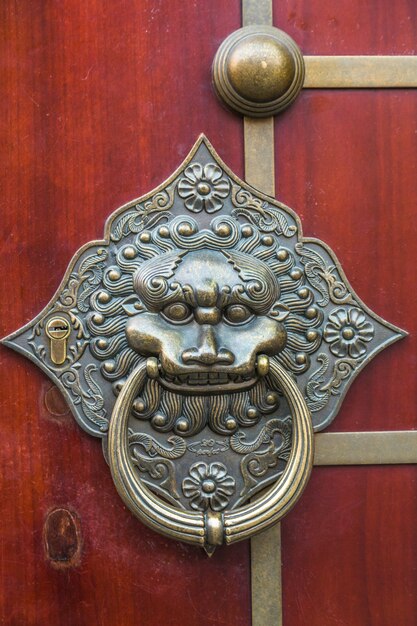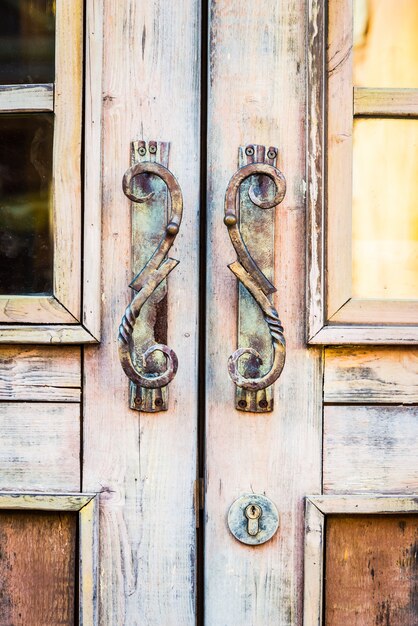Exploring Doorknobs in Mythology and Folklore Unveiling Legends and Tales
Exploring the symbolic meanings of doorknobs in various cultures, from ancient mythology to modern interpretations, uncovering the rich tapestry of stories and beliefs surrounding these everyday objects.

- Anthony Arphan
- 9 min read

Throughout history, many common objects have found their way into the stories and traditions of various cultures. Among these, certain intricate metal fixtures have held significant symbolic value. These everyday items often serve as powerful metaphors, representing transitions, secrets, and even gateways to other realms.
In countless traditions, these metallic guardians are more than mere functional pieces. They are seen as sentinels, safeguarding entrances and controlling access to sacred spaces. The recurring presence of these items in traditional stories highlights their importance in the human imagination and their role in shaping our understanding of thresholds and boundaries.
Across different regions and eras, tales featuring these objects abound. From ancient tales in distant lands to more recent urban legends, these fixtures often appear as mys
Doorknobs in Ancient Mythology
The significance of ornate handles in the lore of ancient civilizations is a fascinating topic that reveals much about the beliefs and cultural practices of early societies. These objects, often intricately designed, were more than mere functional items; they held symbolic meaning and were frequently featured in stories passed down through generations.
In the narratives of ancient Greece, for instance, elaborately crafted handles were sometimes depicted as enchanted artifacts, capable of granting access to hidden realms or bestowing unique powers upon those deemed worthy. These tales illustrate the profound role such objects played in the spiritual and daily lives of the people, intertwining practicality with mysticism.
Similarly, in Egyptian traditions, the use of beautifully adorned handles in sacred architecture signified the transition between
Symbolism in Greek Myths
Ancient Greek stories are rich with layers of meaning that extend beyond mere narrative. These tales often embody deeper truths and convey important concepts through their characters, settings, and objects. By exploring these narratives, we gain insights into how the Greeks understood the world and the forces that shape human experience.
The Role of Objects in Stories
In many of these ancient accounts, objects serve as potent symbols representing broader themes. These items are not just passive elements but active components that drive the plot and embody deeper messages. For example:
- Weapons: Items like Zeus’s thunderbolt or Poseidon’s trident signify authority and power.
- Artifacts: Objects such as the Golden Fleece symbolize divine favor and the quest for greatness.
- Labyrinths: Structures like the one built for the Minotaur reflect the complexities of human challenges and the pursuit of solutions.
Symbolic Meanings in Characters
Characters in these ancient stories often personify abstract ideas or forces of nature. These individuals might symbolize aspects of the human condition or cosmic principles. Consider these examples:
- Athena: The goddess of wisdom and warfare represents the balance of intellect and strategy.
- Hades: The ruler of the underworld embodies the inevitability of death and the afterlife.
- Prometheus: The Titan who defied Zeus to give fire to humanity symbolizes rebellion and foresight.
These symbolic elements work together to create a rich tapestry of meaning in the stories, offering a window into how ancient Greeks perceived their world and its mysteries.
This section explores how objects and characters in ancient stories serve as symbols, providing insight into Greek thought and culture through a variety of examples and explanations.
Roman Legends and Doorknobs
Throughout ancient Rome, everyday objects often held deep symbolic meaning. The intricately crafted mechanisms found on entryways were no exception, frequently woven into various narratives and cultural beliefs. These elements served not only practical functions but also played significant roles in the stories that shaped Roman society.
Symbolic Significance in Roman Narratives

The objects adorning entrances were imbued with symbolic importance in Roman lore. These items were thought to be protectors, guardians of the household, keeping unwelcome spirits at bay. They were often associated with deities and heroes, believed to hold mystical powers that could influence the well-being of those who dwelled
Egyptian Beliefs and Symbolism
Ancient Egyptian culture is rich with fascinating narratives and profound meanings. The people of this ancient civilization imbued their everyday objects with significant spiritual and cultural importance, reflecting their deep connection to the divine and the afterlife. Understanding these connections provides valuable insight into their worldview and religious practices.
Spiritual Significance
In ancient Egypt, various objects carried symbolic meanings tied to protection, power, and transition. These items often served as bridges between the mortal world and the realm of the gods, embodying the beliefs and values of the society.
- Ankh: Known as the key of life, this symbol represented eternal life and was often depicted in the hands of deities.
Folklore and Superstitions Surrounding Doorknobs
Throughout history, various cultures have woven intriguing beliefs and traditions around everyday objects. This segment delves into the fascinating stories and customs linked to a common household item, showcasing the blend of mysticism and cultural values that these narratives reflect.
In many regions, it’s thought that certain types of handles hold protective powers, safeguarding homes from evil spirits. This belief has roots in ancient practices where these household elements were adorned with symbols or crafted from specific materials believed to repel negative energy.
Some tales speak of magical qualities, where turning the handle in a particular way could reveal hidden secrets or lead to enchanted realms. Such stories often feature in local legends, emphasizing the mystical connection between these objects and the unk
European Folktales and Traditions
European narratives are rich with stories and practices that have been passed down through generations. These tales often reflect the culture and values of the societies from which they originate, offering a window into the past. They feature a variety of characters and scenarios that highlight the imagination and beliefs of people from different regions.
- Germanic Narratives: Known for their intriguing characters and moral lessons, Germanic stories often involve creatures and magical elements that teach important life lessons.
- Scandinavian Lore: This region’s tales are filled with mythical beings and adventures, portraying the strength and resilience of its people amidst harsh climates and rugged landscapes.
<
Certainly! Here’s a unique section in HTML format for the topic “Asian Myths and Symbolic Meanings”:
Asian Myths and Symbolic Meanings
In various cultures across Asia, objects and symbols hold deep significance beyond their everyday use. From ancient legends to cultural beliefs, certain elements are infused with rich meanings that reflect spiritual and philosophical concepts. This section explores how these elements have been woven into stories and symbols across different Asian traditions.
In these cultural narratives, objects often represent deeper ideas and values. These symbols can embody concepts of protection, power, or transformation, and they often bridge the physical and spiritual realms. Here are some notable examples:
- Chinese Traditions: In China, certain objects are believed to bring good fortune or ward off negative forces. For instance, the dragon is a powerful symbol of strength and prosperity, often featured in various forms of art and decoration.
- Japanese Beliefs: In Japan, objects such as the sacred mirror are not only revered artifacts but also symbols of divine presence and truth. They play a role in rituals and ceremonies that honor deities and ancestors.
- Korean Customs: In Korea, traditional items like the Korean tiger have rich symbolic meanings. The tiger is seen as a guardian against evil spirits and a symbol of courage and strength.
- Indian Legends: In Indian culture, elements like the lotus flower are imbued with spiritual significance. The lotus represents purity, rebirth, and the divine nature of the universe.
These examples show how cultural artifacts and symbols are more than mere objects; they are embedded with meanings that resonate through stories, rituals, and everyday practices. By exploring these symbols, we gain insight into the values and beliefs that shape various Asian cultures.
This section delves into the symbolic meanings of objects in different Asian traditions and explores their roles in cultural practices.
Certainly! Here’s a unique section for your article in HTML format on the topic “Americas: Stories and Beliefs”:
Americas: Stories and Beliefs
In the Americas, there is a rich tapestry of stories and convictions that explore the mystical and the supernatural. These narratives often feature symbolic objects and artifacts that hold deeper meanings beyond their physical forms. The traditions of these diverse cultures are filled with rich symbolism and reflections on the unseen forces that shape our world.
From ancient civilizations to modern communities, various forms of belief systems have shaped how people interpret the world around them. Here are some prominent themes and stories from different regions:
- Native American Traditions: Many indigenous cultures across North and South America have unique practices that involve spiritual symbols and sacred objects. These items are often seen as conduits to the spiritual realm and are believed to possess protective or transformative powers.
- Latin American Folklore: In Latin America, folk stories often include elements of enchantment and the supernatural. These narratives might involve mythical beings or objects that serve as intermediaries between the earthly and the mystical.
- Caribbean Beliefs: The Caribbean region features a blend of indigenous, African, and European influences. Here, artifacts and symbols often play a significant role in rituals and spiritual practices, embodying both protective and transformative qualities.
- North American Urban Legends: In more contemporary settings, urban legends and modern myths have emerged. These stories frequently explore themes of fear, mystery, and the unknown, reflecting contemporary anxieties and curiosities.
Each of these cultural traditions offers a unique perspective on how people interact with the mystical and the spiritual aspects of their environment. By exploring these diverse beliefs and stories, one can gain insight into the ways communities understand and navigate the mysterious forces of their world.
This section introduces the idea of exploring various cultural beliefs and practices related to symbolic objects and artifacts in the Americas, with a focus on differ
Modern Interpretations of Doorknob Legends
In recent times, the age-old symbols of entryways and portals have been reimagined in contemporary culture. Today’s creations often blend traditional symbolism with fresh, innovative perspectives. These modern takes offer new ways to explore the ideas of passage and transition, reflecting both the past and the present.
Creators and storytellers frequently draw upon ancient motifs, reinterpreting them for a modern audience. By adapting these concepts, they provide a bridge between historical beliefs and today’s cultural landscape. This evolution showcases how timeless symbols can be re-envisioned to resonate with contemporary themes.
Through various media such as literature, film, and art, these revamped symbols explore themes of mystery, discovery, and transformation. The creative reinterpretations invite audiences to see these familiar elements in new and intriguing ways, demonstrating the enduring relevance of these ancient symbols.
As a result, the exploration of these concepts offers a rich tapestry of narrative and artistic expression that connects the past with the present, highlighting how old symbols can inspire new stories and interpretations.
This section introduces the idea of modern reinterpretations of traditional symbols associated with entryways and explores how these concepts are being refreshed for contemporary audiences.